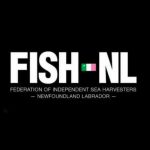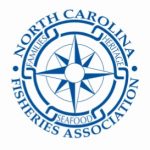Tag Archives: Yukon River
Western Alaska tribes, outraged by bycatch, turn up the heat on fishery managers and trawlers
 Earlier this spring, Maurice McGinty, a tribal leader from the village of Nulato, pulled out his last mason jar of smoked Yukon king. “We have no more now,” said McGinty, 80. He added: “They are pushing us, and our traditional way of life, into a hole.” Imagine hearing and reading versions of McGinty’s story dozens of times, told by Indigenous people who live along the Yukon and another iconic subsistence river in Southwest Alaska, the Kuskokwim. That’s the reality this week for the policymakers on the North Pacific Fishery Management Council, the federal commission that regulates commercial fishing in the American waters of the Bering Sea. On one side are tribal leaders from the Yukon and Kuskokwim, On the other side are representatives for the trawlers, more, >>click to read<< 13:51
Earlier this spring, Maurice McGinty, a tribal leader from the village of Nulato, pulled out his last mason jar of smoked Yukon king. “We have no more now,” said McGinty, 80. He added: “They are pushing us, and our traditional way of life, into a hole.” Imagine hearing and reading versions of McGinty’s story dozens of times, told by Indigenous people who live along the Yukon and another iconic subsistence river in Southwest Alaska, the Kuskokwim. That’s the reality this week for the policymakers on the North Pacific Fishery Management Council, the federal commission that regulates commercial fishing in the American waters of the Bering Sea. On one side are tribal leaders from the Yukon and Kuskokwim, On the other side are representatives for the trawlers, more, >>click to read<< 13:51
2023 was another bad year for chinook, fall chum salmon, Yukon River Panel hears
 Alaska and Yukon representatives met in Whitehorse last week to discuss the 2023 chinook and fall chum salmon runs on the Yukon River, which once again failed to meet Canadian conservation goals. An estimated 58,529 chinook salmn entered the river last year, according to public presentations by the Alaska Department of Fish and Game, and Fisheries and Oceans Canada (DFO) during the Yukon River Panel’s post-season meeting. It was the second-smallest run on record — 2022 was the smallest — and not enough to meet spawning escapement goals on either side of the border. The goals set out the minimum range of fish that need to make it to their spawning areas to healthily sustain the population. more, >>click to read<< 13:51
Alaska and Yukon representatives met in Whitehorse last week to discuss the 2023 chinook and fall chum salmon runs on the Yukon River, which once again failed to meet Canadian conservation goals. An estimated 58,529 chinook salmn entered the river last year, according to public presentations by the Alaska Department of Fish and Game, and Fisheries and Oceans Canada (DFO) during the Yukon River Panel’s post-season meeting. It was the second-smallest run on record — 2022 was the smallest — and not enough to meet spawning escapement goals on either side of the border. The goals set out the minimum range of fish that need to make it to their spawning areas to healthily sustain the population. more, >>click to read<< 13:51
‘Freaked out’: Big money industry crippling salmon population in Alaska, natives say
 There is no more salmon. That’s what native Alaskan Ricko DeWilde is most concerned with these days. Once flowing with abundance, native tribes have been sounding the alarm about the overfishing of Alaskan Ricko DeWilde and other native fish by international fishing companies, essentially wiping out natives’ main source of food as well as a cultural touchstone. “That’s a way of life that we’re losing right there,” DeWilde said. “Any of the fishing along the Yukon River has been prohibited,” DeWilde said. “The commercial fishing industry is just running rampant out here and it’s big money. They take over to board of fish, they take over to politicians, they have them in their pocket and it becomes like a fish mafia out here.” photos, >>click to read<< 08:08
There is no more salmon. That’s what native Alaskan Ricko DeWilde is most concerned with these days. Once flowing with abundance, native tribes have been sounding the alarm about the overfishing of Alaskan Ricko DeWilde and other native fish by international fishing companies, essentially wiping out natives’ main source of food as well as a cultural touchstone. “That’s a way of life that we’re losing right there,” DeWilde said. “Any of the fishing along the Yukon River has been prohibited,” DeWilde said. “The commercial fishing industry is just running rampant out here and it’s big money. They take over to board of fish, they take over to politicians, they have them in their pocket and it becomes like a fish mafia out here.” photos, >>click to read<< 08:08

Disaster aid has arrived, but Western Alaska’s salmon and crab problems continue
The Alaska congressional delegation announced on Friday that the U.S. Commerce Department released the disaster aid. The money is to go to harvesters, processors and communities affected by designated disasters in salmon and crab fisheries that occurred between 2020 and 2022. For Bering Sea snow crab, signs are that the problems that led to the first-ever harvest closure, which was announced last October, will last for years. The National Oceanic and Atmospheric Administration Fisheries Service 2022 survey found that despite the emergence of cooler and more normal temperatures, mature male snow crab abundance was the lowest on record and mature female snow crab abundance was the third lowest on record. >click to read< 10:12

New study proposes to uncover where chinook salmon could be dying en route to Yukon
The state of Alaska is proposing new research to track dwindling chinook salmon numbers this spring, and it’s possible the study could eventually extend into the Yukon. This week, members of the bilateral Yukon River Panel met in Anchorage, Alaska, to brainstorm ways to help the salmon, which undertake one of the longest salmon migrations in the world. It’s during this migration, though, that tens of thousands of salmon seem to go missing every year. >click to read< 10:23

2021 Yukon River Chinook salmon run will likely be small, according to forecast
Somewhere between 42,000 and 77,000 Canadian-origin fish are anticipated to make the journey from the Bering Sea this year, Alaska and Yukon experts told attendees during the Yukon River Panel’s pre-season meeting on Tuesday. The most likely run size would be 57,000, they said. That’s smaller than the pre season outlooks for 2020 and 2019, and both those years ended disastrously when it came to getting enough salmon across the border. Under an international treaty, Canada and the U.S. are supposed to work together to ensure at least 42,500 fish make it to their spawning waters in Yukon. That spawning escapement goal hasn’t been met since 2018, last year only about 33,000 Chinook made it. >click to read< 13:21

Scientists puzzled by 30,000 chinook that seem to be missing from Yukon River
Salmon counts on both sides of the Canada-U.S. border in 2020 were discussed recently at a meeting of the Yukon River Panel. One finding stood out. Last year about 77,000 chinook salmon were counted swimming by the Pilot Sonar station near the mouth of the Yukon River in Alaska. About 1,750 kilometres upriver, at the Eagle Sonar station, just before the Alaska-Yukon border, about 49,500 were counted. This could mean fish are dying or being miscounted, or that harvesting is going unreported, though there is no evidence of that. All parties agree that it’s a mystery and requires investigation. >click to read< 19:25

Scientists perplexed by this year’s low chum salmon numbers in Yukon River
The latest estimates aren’t just bad, they’re “absolutely dismal,” says Stephanie Quinn-Davidson, director of the Yukon River Inter-Tribal Fish Commission in Alaska. Every year scientists count fish as they swim upstream by Eagle, Alaska, on the way back from the ocean. Scientists manually review the data from the Eagle sonar. While it can be tricky, they can separate chum from other fish by size, speed, and direction of travel. This year the station’s fall chum estimate is 23,828 fish. >click to read< 08:47

Chum, Chinook returns fall short across Yukon, Western Alaska
Poor chum and coho returns led to some of the lowest commercial harvests in decades across much of Western Alaska and biologists are unsure why far fewer Yukon chinook are making it to Canada in recent years. The Yukon River summer chum return of approximately 733,000 fish was sufficient to meet the minimum escapement goal for the entirety of the massive drainage but it did not allow for a significant commercial fishery and was far less than expectations. Fishing was closed through the first half of the run while it was unclear if a harvestable surplus of chum would be available according to the Alaska Department of Fish and Game’s preliminary Yukon River summer fishery summary. >click to read< 14:55

Kings of the wild frontier
In 2013, I sat in a courtroom in Bethel, Alaska, and watched the trial of 23 Yup’ik fishermen, accused of flouting a ban on the fishing of king salmon the previous summer. The ban had been implemented by the Alaska Department of Fish and Game as king salmon numbers plummeted, unexpectedly and inexplicably. The fishermen pleaded not guilty. They were justified in fishing, they said, because the taking of king salmon was part of their spiritual practice, their cultural heritage. First amendment. Mike Williams, then chief of the Yup’ik nation, pulled me to one side during a recess. “Gandhi had his salt, we have our salmon,” he said. For the Yup’ik, getting arrested was no accident. They had issued a press release about their intention to fish before setting out. >click to read< 14:46

Salmon complete 1,000-mile journey, and life
On a morning with biting air in the single digits Fahrenheit, this river smells like sulfur and is splashy and loud. Bald eagles and ravens swoop in the updraft of a nearby rock bluff in what looks like play. In early November, a time when shadows lengthen and deep cold hardens the landscape, chum salmon have returned to spawn in the lower Delta River. In spots, the water is so shallow that dorsal fins wiggle in the frigid air. Some fish get frostbite on really cold days. Now is the peak of one of Alaska’s last great animal migrations of the year. click here to read the story 10:11
Yukon kings are on the rebound, Canadians, however, are fishing less
 Yukon River chinook stocks are on the upswing, according to a season summary, though not everybody is fishing for the surplus. Holly Carroll, the area management biologist for the Yukon River section of the Alaska Department of Fish and Game, said the painful restrictions on subsistence harvests have paid off. “We wouldn’t have made escapement goals at all if we hadn’t restricted harvest,” Carroll said. “We have to restrict the harvest just to meet the bare minimum for sustaining the run. The restrictions in the subsistence fishery have helped to build the numbers back up.” With 176,895 fish past the sonar counter at Pilot Station, the 2016 chinook run has nosed back up to the most recent 20-year average of 178,000. Along with total run numbers, the amount of chinook into Canada is improving. However, First Nations communities and Canada fisheries managers have different ideas than Alaska, and much of the run sent over the border went unharvested. A major goal of ADFG Yukon River management aims to send between 42,500 and 55,000 chinook salmon over the Canadian border at Eagle as per the Pacific Salmon Treaty. Read the story here 15:54
Yukon River chinook stocks are on the upswing, according to a season summary, though not everybody is fishing for the surplus. Holly Carroll, the area management biologist for the Yukon River section of the Alaska Department of Fish and Game, said the painful restrictions on subsistence harvests have paid off. “We wouldn’t have made escapement goals at all if we hadn’t restricted harvest,” Carroll said. “We have to restrict the harvest just to meet the bare minimum for sustaining the run. The restrictions in the subsistence fishery have helped to build the numbers back up.” With 176,895 fish past the sonar counter at Pilot Station, the 2016 chinook run has nosed back up to the most recent 20-year average of 178,000. Along with total run numbers, the amount of chinook into Canada is improving. However, First Nations communities and Canada fisheries managers have different ideas than Alaska, and much of the run sent over the border went unharvested. A major goal of ADFG Yukon River management aims to send between 42,500 and 55,000 chinook salmon over the Canadian border at Eagle as per the Pacific Salmon Treaty. Read the story here 15:54
Yukon River king salmon pour over the Canada border
 A surge of Yukon River king salmon crossed the Canada border this week, which fulfilled a treaty obligation to deliver Chinook to their Canadian spawning grounds. About 44,400 kings had been counted by Thursday at the Eagle sonar project, which is the final count before the fish enter Canada waters. An escapement goal of 42,500 king salmon is called for in the Pacific Salmon Treaty between the U.S. and Canada. Read the rest here 23:12
A surge of Yukon River king salmon crossed the Canada border this week, which fulfilled a treaty obligation to deliver Chinook to their Canadian spawning grounds. About 44,400 kings had been counted by Thursday at the Eagle sonar project, which is the final count before the fish enter Canada waters. An escapement goal of 42,500 king salmon is called for in the Pacific Salmon Treaty between the U.S. and Canada. Read the rest here 23:12
Chinook closures impede summer chum subsistence
 Summer chum and Chinook salmon have begun their runs along the Yukon River. Wildlife managers and fishermen met via teleconference Tuesday to discuss river conditions and the salmon’s progress upstream. Community members reported summer chum as far upriver as Huslia and Ruby, with Chinook salmon fast on their heels. However, the much-coveted kings may not be a welcome sight to fishermen this year. “We have to eat along this river; everybody has to eat. They can’t live out of the store,” said Martha, a fisherman in Ruby. Read the rest here 10:31
Summer chum and Chinook salmon have begun their runs along the Yukon River. Wildlife managers and fishermen met via teleconference Tuesday to discuss river conditions and the salmon’s progress upstream. Community members reported summer chum as far upriver as Huslia and Ruby, with Chinook salmon fast on their heels. However, the much-coveted kings may not be a welcome sight to fishermen this year. “We have to eat along this river; everybody has to eat. They can’t live out of the store,” said Martha, a fisherman in Ruby. Read the rest here 10:31
Early breakup on Yukon River could mean early king run
 If the king run does arrive early, biologists want to be ready for it. This year’s chinook run is projected to be one of the worst ever and fisheries managers have already told villagers who live along the river that there likely will be no subsistence fishing for kings this year. The last thing they want to happen is for a bunch of kings to show up early and get caught by fishermen who are fishing for sheefish and whitefish. Read more here 11:47
If the king run does arrive early, biologists want to be ready for it. This year’s chinook run is projected to be one of the worst ever and fisheries managers have already told villagers who live along the river that there likely will be no subsistence fishing for kings this year. The last thing they want to happen is for a bunch of kings to show up early and get caught by fishermen who are fishing for sheefish and whitefish. Read more here 11:47
Alaska halts 2014 Chinook salmon fishing on Yukon River
The worst fears are coming true this year for the Chinook salmon run on the Yukon River. The Alaska Department of Fish and Game says there will be no commercial or sport fishing for Chinook salmon this season. Read more here 16:05
Alaska promises to do better on Yukon River salmon
![]() International salmon talks with the Yukon River Panel have wrapped up in Whitehorse. In the last seven years, Alaska has delivered its salmon quotas on the Yukon River, twice. This year, the Alaskans are promising to do better. Andrew Bassich is the U.S. delegate from Eagle, Alaska. more@cbcnews 20:31
International salmon talks with the Yukon River Panel have wrapped up in Whitehorse. In the last seven years, Alaska has delivered its salmon quotas on the Yukon River, twice. This year, the Alaskans are promising to do better. Andrew Bassich is the U.S. delegate from Eagle, Alaska. more@cbcnews 20:31
On the Yukon River, a Troubling Salmon Decline
 Every year, thousands of Chinook salmon swim past Eagle en route to their Canadian spawning grounds, some as far away as Teslin, Yukon, nearly 2,000 miles from the ocean. Before the salmon reach Eagle, they’re American fish; once they’ve passed the town, they effectively become Canadian. And while the salmon may not understand the distinction, the humans who fish for them certainly do. Click here for larger image more@earthisland.org 22:58
Every year, thousands of Chinook salmon swim past Eagle en route to their Canadian spawning grounds, some as far away as Teslin, Yukon, nearly 2,000 miles from the ocean. Before the salmon reach Eagle, they’re American fish; once they’ve passed the town, they effectively become Canadian. And while the salmon may not understand the distinction, the humans who fish for them certainly do. Click here for larger image more@earthisland.org 22:58














































